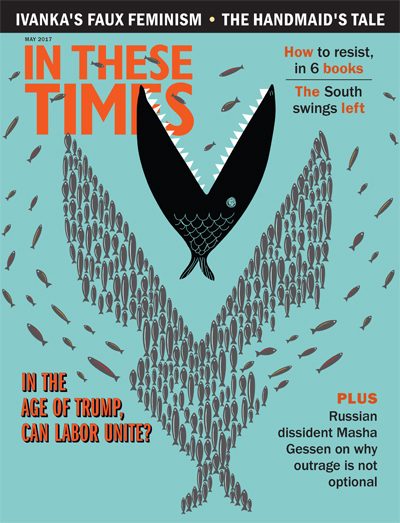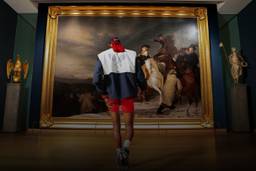The Elusive Emily Dickinson
A new film explores the poet’s restless mind and lonely life.
Michael Atkinson

It’s no small task to make a biopic from the stuff of Emily Dickinson’s life. She is virtually defined, historically, by how little happened to her. But it feels like the natural domain of filmmaker Terence Davies, whose ruminative, at times archly contrived career has specialized in interior states and a fearsome anti-nostalgia. Davies has always explored the past, and how our idea of it tends to mask real suffering; he’s been to 1940s Louisiana, fin-de-siècle New York, postwar London, 1910s rural Scotland and now 19th-century Amherst. His best films, Distant Voices, Still Lives (1988) and The Long Day Closes (1992), are precise and scorchingly felt memoir movies about his postwar Liverpool childhood. Their sometimes stylized balance between beatific remembrance and domestic horror is unforgettable.
A Quiet Passion, while scrupulous about visuals and facts, is also wildly artificial, at times jarringly. Davies has the Dickinsons and their satellites speak in heightened, proprietous novel-speak, in stiff compositions that emphasize the surface cordiality and social rituals that pervaded the culture. Or is it that the past is too distant, too unknowable, to portray realistically? Dickinson herself (Cynthia Nixon) begins here as a schoolgirl, and the movie follows her through the years, alongside her less neurotic, more nurturing younger sister, Lavinia (Jennifer Ehle), as she rebels against her father (Keith Carradine) and the community’s churchgoing standards. Given her milieu, deciding not to go to church is an earthquake.
Eventually, others marry, the Civil War comes and goes (in a rather Ken Burns-y montage), Emily’s father dies, and, chillingly, time accrues. As age gradually wracks her features, she angrily recuses herself from all social interaction, considering it laden with hypocrisy and lies. At the same time, she begins suffering pain and seizures that are eventually diagnosed as Bright’s disease.
Davies has always exuded sympathy for lonely women crucified by social convention. Amidst the insistently mannered dialogue and frieze-like images, Nixon and Ehle offer a bloodpounding countercharge; both are consistently gripping, and as the sisters’ lives slide into an autumnal dark age, Davies’ artificiality gives way to emotional nakedness that’s at times hard to watch. This shift happens visibly. When Emily gives a beloved young reverend her poems to read, we watch her watch him with a sidelong stare that suggests life and death hang in the balance.
Davies holds on the moment, lingering on Emily, making it clear that this is her reality, all the polite blather be damned. His praise comes to little; as her years pass, Dickinson evolves into a cave-dwelling ogre, lashing out at everyone for the slightest incursion into her solitude. Throughout, the poems are read, by Nixon, on the soundtrack — at first in a light singsong that seems to betray the work’s chilly oddness. In the end, however, the readings turn steady and grave, landing inevitably on “Because I could not stop for Death” and Dickinson’s defiant, incantatory voice does its own deathless work.
What’s oddest about A Quiet Passion—besides its rather unadventurous title — is Davies’ decision to portray Dickinson’s life as a downward spiral, and one fueled by her roaring lonesomeness and bitterness about not being beautiful enough to attract a mate. In all of their questioning weirdness, the poems seem to tell a deeper story. Her sexuality remains mysterious, for one thing. In one seemingly revelatory scene, Dickinson is confronted late at night by her new sister-in-law, Susan Gilbert (Jodhi May), who in the period patois’s agonizing euphemisms all but confesses to being gay and loathing the prospect of sex with her husband.
Dickinson, in return, consoles her with abstruse hints at her own perhaps-Sapphic alienation, though by the end we are only sure of her passion to be understood, via her poetry, by somebody, anybody. Certainly, Dickinson’s poems remain just as mysterious as they are evocative of their maker’s imagination, a literary fact no movie is likely to plumb very effectively.
Davies is left, then, with the woman, a restless mind sidelined by patriarchal American life and left to age and sickness, alone and unloved. As much as we may treasure them, her poems could not save her. For Davies, she was a martyr to them — first to their being written and, eventually, to their being recognized as genius.









